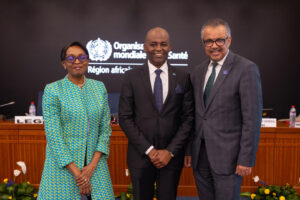by Ben Taylor
In August, President Samia Suluhu Hassan announced her fourth cabinet reshuffle of 2024 and her fourteenth since taking office in March 2021.
The latest reshuffle sees the return of former ministers Palamagamba Kabudi and William Lukuvi to the cabinet, while two other ministers, Angela Kairuki and Ummy Mwalimu, have been removed. Kabudi, who has been reappointed as the Minister of Constitutional and Legal Affairs, and Lukuvi takes up the post of State Minister at the Prime Minister’s Office, overseeing Policy, Parliament, and Coordination. This role effectively makes him the Chief Whip in Parliament.
Lukuvi’s appointment reflects the trust President Samia places in him. Prior to this ministerial appointment he had been a key political advisor to the President since January 2022.
Jenista Mhagama, who was replaced by Lukuvi, has been reassigned to the Ministry of Health, where she takes over from Ummy Mwalimu, who has been completely removed from the cabinet. Mwalimu’s departure is widely attributed to recent challenges at the National Health Insurance Fund (NHIF).
Pindi Hazara Chana has also been reappointed, in her case to the Ministry of Tourism and Natural Resources, replacing Angela Kairuki, who has been made an advisor to the President. Chana, who was removed from the Ministry of Tourism in February 2023 and later served in the Ministry of Sport and Culture and then Constitutional Affair Minister, now returns to her former role.
President Samia also announced the appointment of Hamza Johari as the new Attorney General succeeding Dr Eliezer Feleshi who has been appointed as a Justice at the court of appeal. Johari, who previously served as the Director General of the Tanzania Civil Aviation Authority, played a key role in negotiating the Dubai-Tanzania port agreement, which granted multinational DP World a 30-year contract to run, operate, and develop Dar es Salaam port.
Earlier, in July, Tanzania’s information minister Nape Nnauye was removed from his post following an outcry over comments he made suggesting that elections could be rigged. He was filmed at a rally saying that he would help a fellow ruling party MP win in the 2025 election, and that “election results are not necessarily those in the ballot box, rather they depend on the person counting and making announcements”. He will now be replaced by former land and housing development minister Jerry Slaa.
At the same time, foreign minister January Makamba was also sacked, with Tanzania’s ambassador to Italy, Mahmoud Thabiti Kombo, chosen as his successor. This means that between 2021 and 2024, Tanzania has had five different foreign ministers, a post that the President describes as “the heart of the government.” The Ministry has not had any Minister who has stayed in the ministry for more than a year since President Samia Suluhu came into power.
Many observers have associated Makamba’s sacking with his political ambition for the Presidency. “She saw the previous minister was going against her expectations,” argued political analyst Thomas Kibwana. He added: “If the new minister is to serve for a long time, it is essential that they do not have excessive political ambitions that can detract him from the current responsibilities.”
In announcing the changes, President Samia did not mention specific reasons for her decisions but emphasised the need to put the national interest first. “Your own interests as a human being are secondary, but the nation’s interests come first,” she said. She referenced a Swahili proverb, saying that “positions of power are like borrowed clothes. If you use them well, and the owner sees you wearing them properly, looking neat, and not misbehaving they might let you keep the clothes for a while. But if they find that you are misbehaving with the clothes they lent you, they will not wait; they will take back their clothes.”
Since January, when Makamba had represented President Samia at the Italy-Africa summit, he had been on the receiving end of a social media campaign claiming that he used the trip to set up a network for his own bid for the Presidency.
Finally, the Director of the Prevention and Combating of Corruption Bureau (PCCB), CP Salum Hamduni, has been appointed as the Regional Administrative Secretary for Shinyanga Region. Hamduni, who was appointed as PCCB Director in May 2021, leaves the organization amid an ongoing public awareness campaign against election-related corruption. Crispin Chalamila, a senior official from the President’s Office, has been appointed as the new Director of PCCB.



